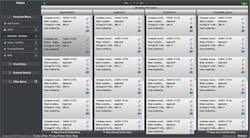Decisiv SRM Streamlines Repair Events
Decisiv SRM connects manufacturers, service providers, and equipment managers to streamline machine service repair events.
The service relationships management (SRM) system provides a framework that enables service and repair information to be shared, tracked, managed, scheduled, and distributed.
Decisiv’s ability to integrate, extend, and connect existing legacy systems as well as its configurable design delivers every customer a solution that is tailored to their specific business needs, says Mark Wasilko, VP of marketing.
“We provide a framework that enables the manufacturer, the dealer, the fleet, and any independent service providers or aftermarket companies to provide the necessary information to expedite the service to them,” Wasilko says. “That’s all designed to drive value to the owner, because streamlined repair process means the assets are up faster, their performance is being optimized, and as a result you have better ROI for the owners of the assets, and the assets are available more quickly.”
Decisiv’s core services platform is split into three different information panels: Case, Vision, and Insite.
Case provides users with the service event management component of the SRM, where work progress is tracked on the system. All communications and approvals are also managed through Case. Dealers are connected so the fleet knows where the asset is, what state of repair it is in, what the cost is going to be, and the estimated return to service. Wasilko says if a manager is using Decisiv’s Case platform when an asset goes down, the fleet owner immediately knows what the source of his problem is.
“[Case] provides a level of control which basically says that I as a construction owner am authorized,” Wasilko says. “I know exactly what’s being fixed, I know when it’s being fixed, and I know what it costs.”
Vision provides the dealer and additional service providers with a view as to the state, nature, and disposition of a machine’s repair. Users can view the repair status by the type of equipment, cost of the estimate, and expected return to service. It provides real-time information to a dealer.
“Because the dealer, or the service provider, is co-communicated with, they know the same nature and state of the problem,” Wasilko says. “They’re immediately able to open a service event, or a repair event, with a description of the repair requirements and all the information they need. So a fleet manager basically has a 360-degree view of every asset in every state of repair, in any location, and at any dealer type.”
Insite provides historical and trending views as to what kind of dealer service and asset performance is being provided. Though Insite, users are able to look into the cost of maintenance by asset type, or do a detailed analysis and trend assessment. They can also analyze the difference in terms of cost of maintenance by different asset type.
“[You can analyze] whatever metric you’re looking for,” Wasilko says. “Expensive, unavailable, slow, problematic, most costly, etc.”
Integration of the service process enables more efficient communication between user and service provider, Wasilko says.
“Information is being dynamically communicated and shared across the Decisiv ecosystem,” he says.
“This system finally gives fleet managers a direct connection and control over the way their assets are being serviced and repaired, at a level they’ve never had available before.”
